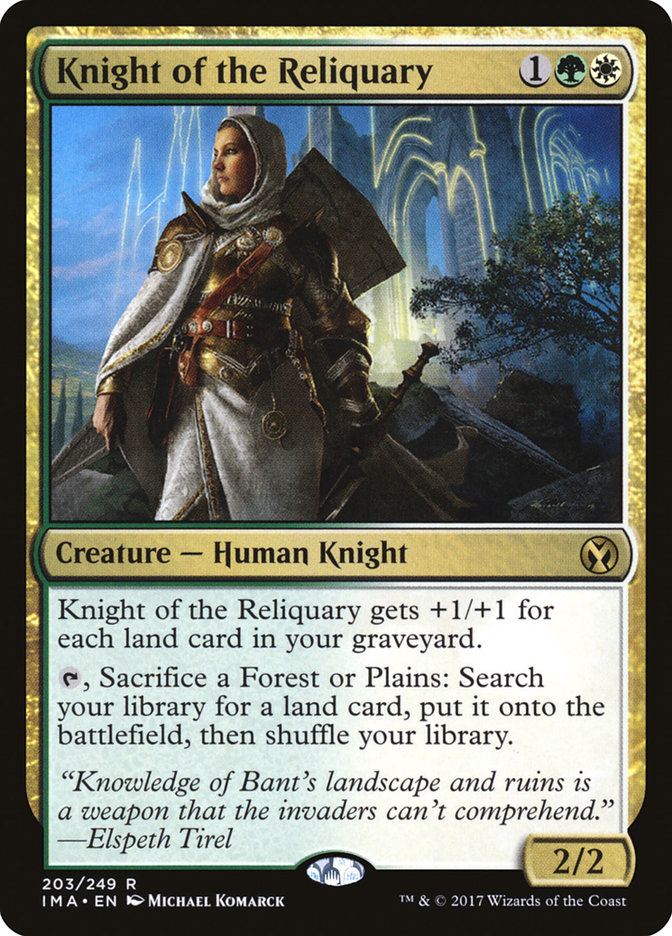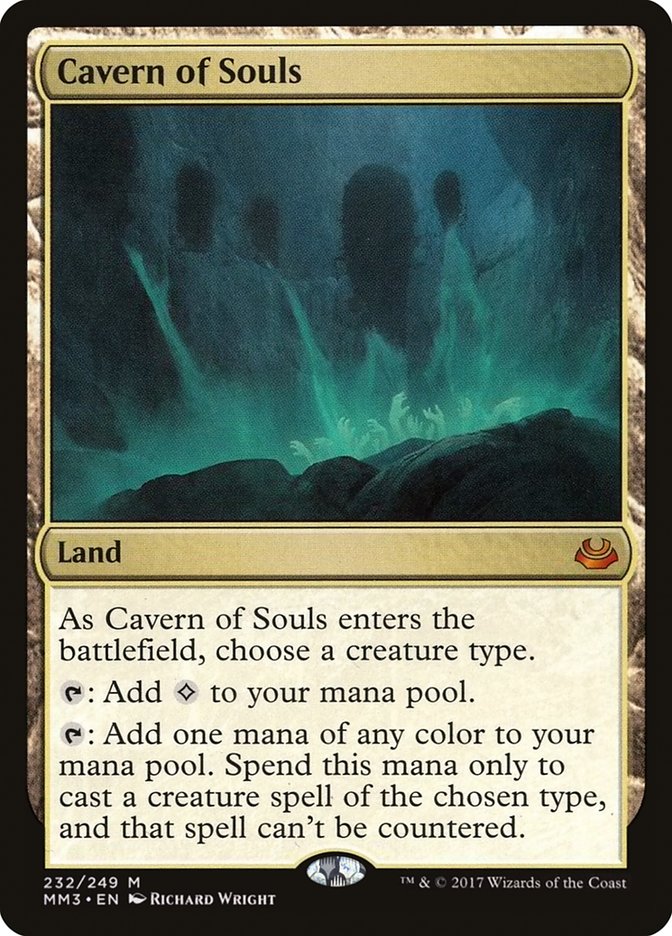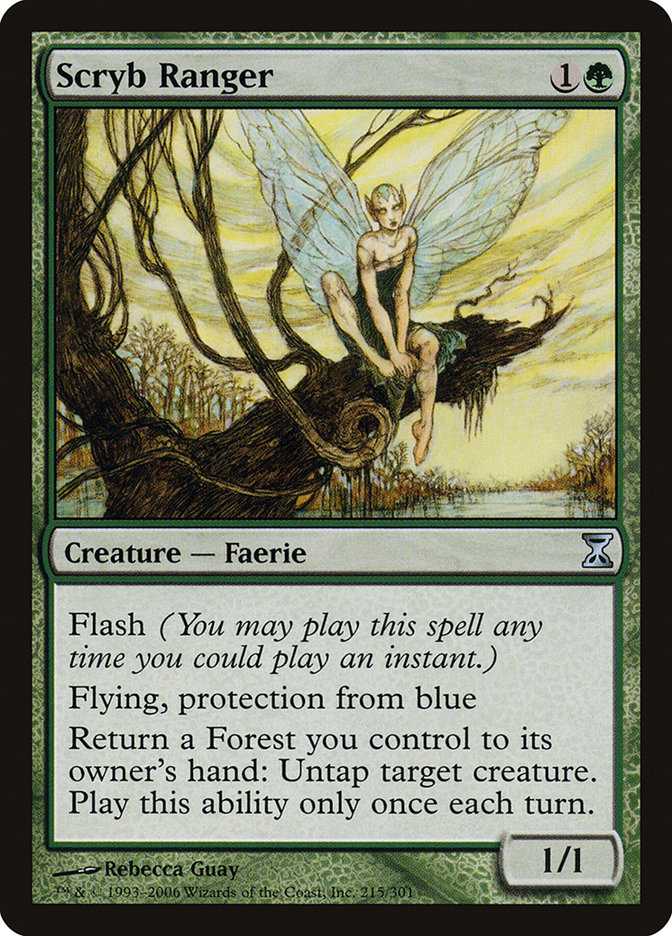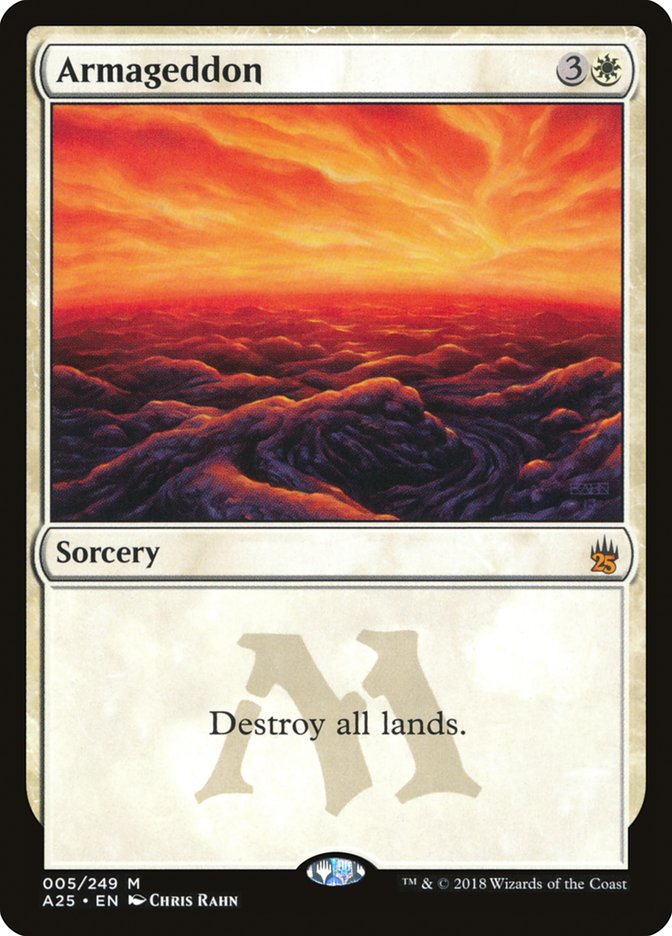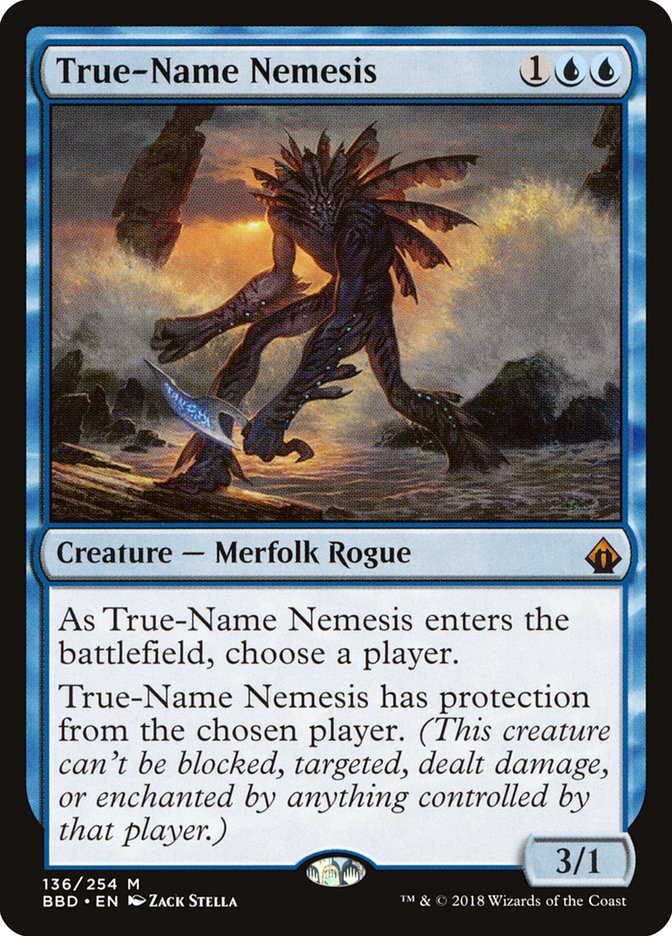It’s been years since I’ve played Elves in Legacy, but I still get asked
for advice on the deck and how to adapt it to the current Legacy metagame.
That’s what happens when you become so closely associated with a deck. It
never really leaves you. Even though I’ve been consistently playing Storm
in the rare times I actually play Legacy these days, I always had the idea
of switching back to Elves at some point in the back of my mind.
You see, Elves and I have some unfinished business. Despite it being the
deck I’m most associated with, I don’t yet have a trophy with it. Two
finals losses, including the heartbreaker against Dave Shiels in
Providence, are what I have to show with my time with the deck, and that
just doesn’t sit right with me.
But amidst all the talk about Goblins and Temur Delver being unlocked by
the banning of Deathrite Shaman is the fact that Elves lost one of the key
pieces that elevated it from fringe archetype to a deck to beat.
Deathrite Shaman was more than just a mana creature for Elves. In fact,
that functionality can be easily replaced with a combination of Fyndhorn
Elves, Llanowar Elves, and Elvish Mystic. But Deathrite Shaman was a key
part of the deck’s aggro plan. Between Quirion Ranger and Wirewood
Symbiote, you could activate Deathrite Shaman multiple times per turn,
producing a significant clock that didn’t care about blockers.
Elves isn’t a good deck at actually attacking. Even with several Elves on
the battlefield, they are small enough to be held in check by a Stoneforge
Mystic or Tarmogoyf. Wirewood Symbiote can help by bouncing a would-be
chump attacker after blockers are declared, but that’s not something you
can rely on since Wirewood Symbiote is always the first target for removal.
In addition to its role as your primary aggressive element, Deathrite
Shaman was also important for its second point of toughness. Mini-sweepers
like Electrickery and Marsh Casualties are among the most common sideboard
cards against Elves, and being able to develop a large enough battlefield
to force it while still being able to quickly recover was one of the
trickiest aspects of playing Elves. Having a couple two-toughness creatures
made that balance much easier to find, but now you’ll often be forced to
play into the sweeper and hope it’s not there.
Simply put, Elves took a big hit from these bans, and I fully expect it to
return to its fringe status from before Deathrite Shaman was printed.
Unless something significant changes, my days of playing Elves in Legacy
are completely over.
But there’s a silver lining here. The reason I picked up Elves in the first
place was because the deck I had been playing previously was invalidated by
the printing of Deathrite Shaman. That deck is the unfortunately named
Maverick. For the uninitiated, it’s a G/W disruptive deck that plays
similarly to Todd Stevens’ G/W Company deck in Modern, just with a
significantly increased clock since Legacy is a more powerful format.
Maverick was the deck I played alongside U/W Delver in Standard during my
first year playing the SCG Tour. It brought me my first Open top 8 in
Baltimore, way back over six years ago. I looked a little different back
then…
I promise I’m the person on the right and not someone acting under an
assumed identity to enter Magic: the Gathering tournaments.
The long hair is gone, but my love for Maverick never died. Knight of the
Reliquary is among the most powerful creatures ever printed, and few decks
utilize Wasteland better than this one, a card that should get a lot better
in a post-Deathrite Shaman world. Deathrite Shaman gave the fair blue decks
a mana creature that’s better than Noble Hierarch and an easy way to
insulate yourself from opposing mana denial effects, which is the core of
Maverick’s Disruption suite.
Without the asymmetry of starting on a mana creature or the ability to
easily leverage the mana denial effects, Maverick lost its positive matchup
against the fair blue decks of the format, and as a result became
unplayable almost immediately. At the time many players saw the rise of
Miracles after Terminus was printed as the bigger factor in Maverick’s
demise, but in reality, it was Deathrite Shaman.
So, with Deathrite Shaman gone and the loss of Gitaxian Probe significantly
hurting Storm, I’m ready to hop in the time machine and activate a million
Wastelands. My proposed list:
Creatures (24)
- 4 Mother of Runes
- 1 Scryb Ranger
- 1 Gaddock Teeg
- 4 Noble Hierarch
- 4 Knight of the Reliquary
- 2 Qasali Pridemage
- 3 Scavenging Ooze
- 4 Thalia, Guardian of Thraben
- 1 Ramunap Excavator
Lands (24)
Spells (12)

The updates from 2012 are fairly minimal, but there are some key decisions
that led me to this list.
No Splash
You’ll often see Maverick lists splash a third color for various effects.
Blue can give some counterspells against combo decks. Black offers discard
and some added removal. And splashing red allows you to play Punishing Fire
and Grove of the Burnwillows. However, with all these splashes comes an
added inconsistency in the manabase.
Playing Knight of the Reliquary requires you have a significant number of
fetchlands to protect it from Lightning Bolt and enough Forests and Plains
to sacrifice to it. Fitting those in with four copies of Wasteland and
other utility lands is a challenge. Adding any more dual lands means
cutting down on basics, which in turn makes you more vulnerable to opposing
Wastelands.
For some minor upgrades in disruption, I don’t view the inconsistency as a
positive tradeoff. In the Temur Delver matchup, a deck poised to be among
the most popular in the format with Deathrite Shaman gone, it’s absolutely
critical to not fall behind early, so fetching basic lands is important, as
is Cavern of Souls, a land that three color lists can’t find space for.
Your primary creatures are all Humans, so Cavern protects them from Daze
and Force of Will. Blanking Temur’s free counterspells is the easiest way
to stop them from pulling too far ahead and run them out of actual removal.
The splash colors typically help most against combo decks, but right now
it’s Reanimator that’s getting the most hype among the combo decks, and
that’s the one archetype where Maverick enjoys a favorable matchup. Between
Karakas, Scavenging Ooze, and sideboard copies of Surgical Extraction, only
the most explosive of draws from Reanimator decks pose a significant
threat.
There’s no need to get fancy. Just make sure you can cast your spells.
No Dark Depths Combo
Thespian’s Stage wasn’t around the last time I played Maverick, and the
combo with Dark Depths is fairly easy to include since Knight of the
Reliquary can tutor for both pieces. So why then did I leave it out of the
above list?
I don’t know how many of you have played with Knight of the Reliquary, but
if you have, take a moment to think about the times you activated it twice
in a game and lost.
…
You should be thinking of a very low number. Knight is one of those threats
that demands an immediate answer, or you will quickly bury the opponent in
Wastelands or simply attack them to death with your three mana 9/9. So, the
Dark Depths combo is almost assuredly a win more, and once again, I’d
rather have better individual cards. Eschewing it leaves space for a
singleton Maze of Ith, a card that can hold off a Delver of Secrets or
Umezawa’s Jitte-wielding creature or untap your Knight of the Reliquary on
the end of combat step so it can both attack and activate in the same turn.
Once again, there’s no need to get fancy.
Scryb Ranger
This is a staple of Maverick lists and has been for years, but for the
uninitiated, it may be hard to realize why. Sure, in a deck with Mother of
Runes and Knight of the Reliquary, having a creature that can untap them is
valuable, but isn’t that another way to get fancy?
Not exactly. Scryb Ranger is the card that locks up a game once you’re
ahead and have established your more important creatures. In that respect
it’s akin to the Azusa, Lost but Seeking in G/W Company, a card that
supercharges the deck’s synergies and takes away the opponent’s slim outs.
With access to Scryb Ranger, you can begin using Mother of Runes
aggressively to close out the game quickly or find multiple Wastelands in a
turn to cripple the opponent before turning the corner. Legacy decks are
powerful enough to break out of the most difficult soft locks if given
enough time, and Scryb Ranger is the card that takes away that time.
As for the question of playing Scryb Ranger over the cheaper Quirion
Ranger, the flying and protection from blue make the former another way to
stall an early Delver of Secrets, which is the easiest way to lose to
Delver decks.
Armageddon
Maverick decks typically have Choke in the sideboard for midrange blue
decks as a way to supplement the mana denial plan. But these decks
typically have enough non-Islands to play through a Choke and their removal
comes from non-blue cards anyway. Armageddon, despite being symmetric, is
much better suited to this job, especially against Miracles.
Between Noble Hierarch and Knight of the Reliquary, you can either recover
more quickly than the opponent or simply kill them because post-Armageddon,
Knight of the Reliquary is positively gigantic.
And all of this ignore the Lands matchup. I’ve never cast it against them
since Lands wasn’t too popular back then, but I have think that a card that
says “Destroy All Lands” is unbelievably good against the Lands deck.
Sometimes Magic really is easy.
[ It sure is, Ross.
It sure is. – DWest]
True-Name Nemesis
The last card I want to discuss is the one that isn’t in the deck but gives
me the most pause about a return of Maverick. True-Name Nemesis can play
offense or defense against almost all your creatures and often comes with
equipment attached. The best removal spell for it is Council’s Judgment, so
I’ve included two copies in the sideboard, but having to put two copies of
an otherwise mediocre card in your sideboard to answer a single threat
isn’t ideal.
There are going to be some growing pains in figuring out how Maverick fits
into a format years’ removed from when it was last relevant. Mono-Red
Prison and Goblins could force some other cards into the sideboard, and
maybe something new emerges. This is the most interesting Legacy has been
in years and while I may have lost Elves, regaining Maverick and getting
back to a Legacy metagame that is varied and interesting as opposed to
being dominated by a one-mana creature would be a fine trade.
The one constant in Magic is change. You can’t play the same deck for ten
years (as much as Shaheen Soorani might try) and while going back to the
deck I played in 2012 may not seem like much of a change, it is. It’s a
whole new ballgame in Legacy and I’m excited to see how everything plays
out.



